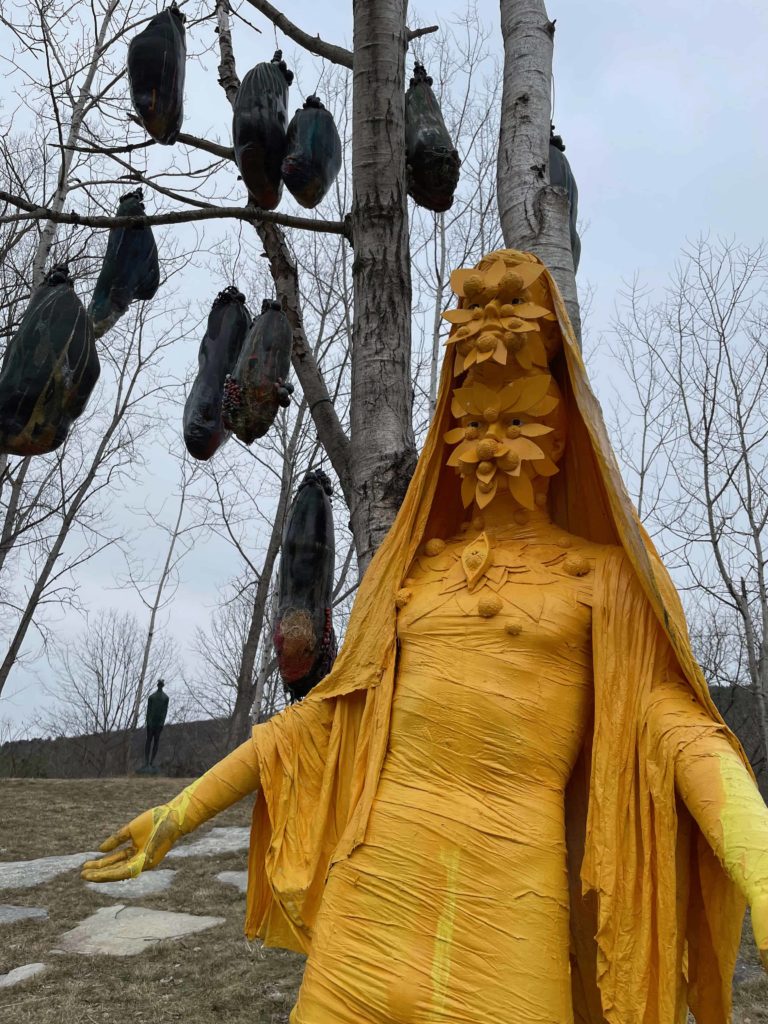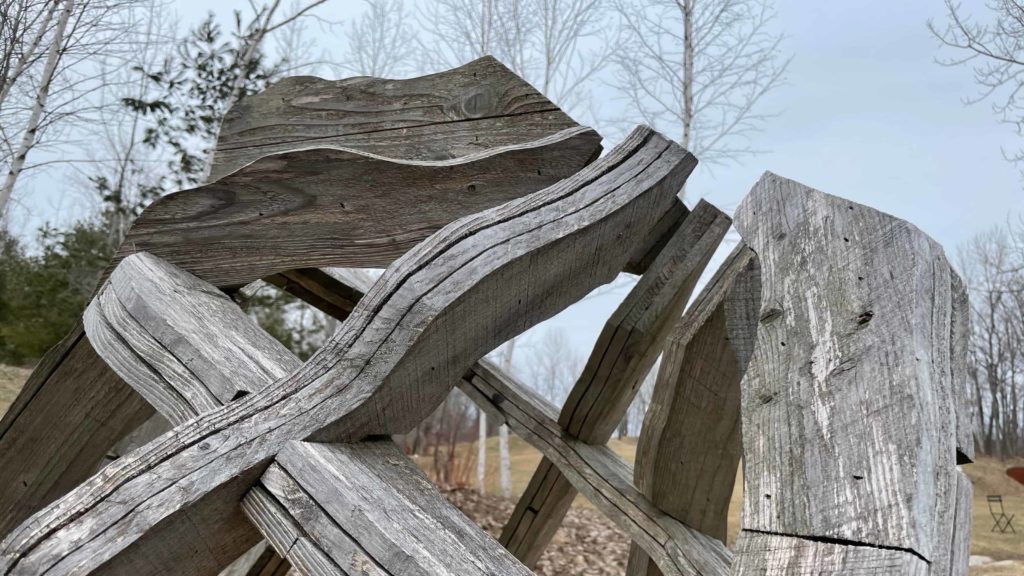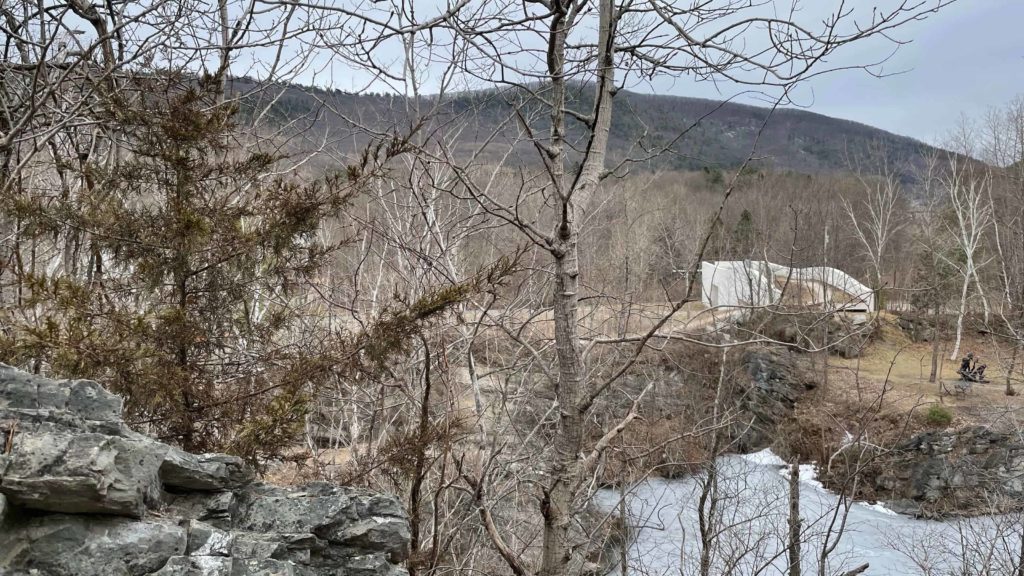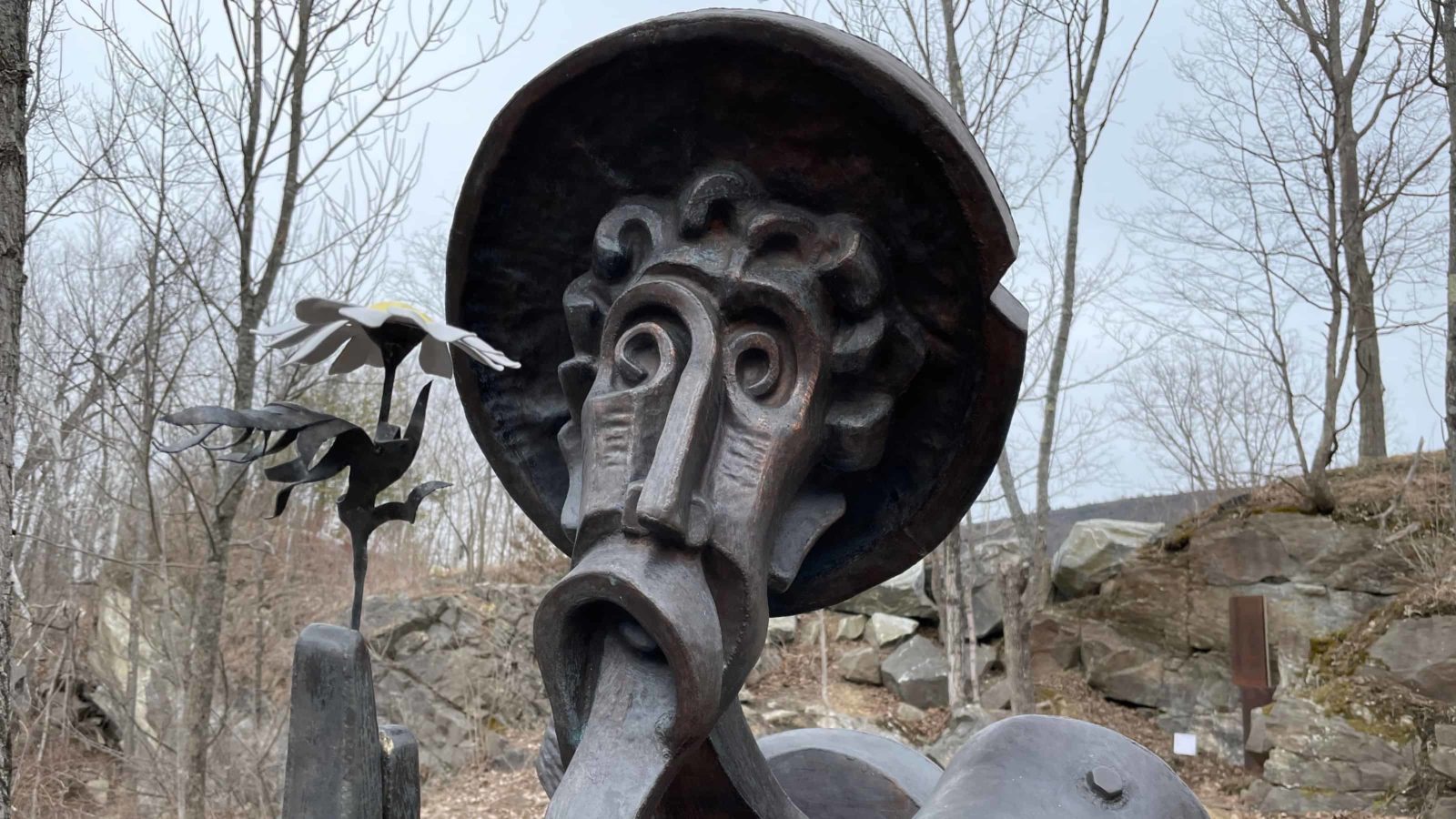Don Quixote is sitting in a frozen field by a bare rock face, staring into the center of a daisy. I wonder what he dreams at the end of winter.
I’m walking through the old marble quarry that has become Turn Park Art Space in West Stockbridge. The pond is frozen solid and opaque. The sky is grey and almost light, and the air is cold enough that breathing feels like taking a long drink of water. The birches stand out against the pine trees. And a Russian sculpture from the 1960s might feel at home.
This Don Quixote is a bronze corkscrew of a figure apparently assembled out of scrap metal, with an abstracted, almost sad look in his eyes. He was made by the sculptor Nikolai Silis, a long way from here.
Silis worked in an artists collective in Moscow. He and his friends, artists like Vladimir Lemport, created work together in a group. They called themselves LeSS, curator Grigori Fateyev told me when the park opened — the name pools their initials, and it is also a nod to Les, the Russian word for forest.
Their studio became well-known as a place where people could talk freely, Fateyev told me. Artists, students and scholars gathered there, like Lembert’s sculpture of Einstein and Bohr sitting here together.







I’ve missed that feeling. While our gathering places are closed, our cafes and museums and studios and gardens … I miss that easy flow of talk among friends. This weekend I could come back to hear music in a fusion of Arabic and Eastern European (performed from inside a glass-walled room while listeners can stand around a fire pit outside).
This afternoon, a bronze knight looking closely into the sepals of a flower is about as close as I can come. It’s a good time to think about them. The sepals are the outer layer that protect the new buds in the cold.
From here I can walk up to the top of the rise and smell the roasting coffee from No. 6 Depot down below. I can walk through the park as a golden retriever galumphs through on the far side and wander into Shaker Mill Books.
And I’m thankful for all of them. It’s because of a conversation at a local bookstore that I’m reading Darra Goldstein’s The Georgian Feast (the Georgia on the border of Europe and Asia). She is a Berkshire writer, Williams professor of Russian, and she has lived and traveled in Silis’ part of the world.
As she introduces the civilizations in this mountain country, I hear the assured and curious voices I imagine sitting around Silis’ drafting table, leaning against the walls among sketches and cardboard, speculating over a drink.
She is looking back to the earliest stories in that land on the Black Sea. The Georgians thought of Medea as the first healer, she says “renowned for her herbal sorcery … the first to use plants for their curative powers” — her name became the root of medicine. I wonder what she sees in a flower too, the petals and pistils and stamen, the calyx and corolla, anther and filament, sleeping in the cold.

